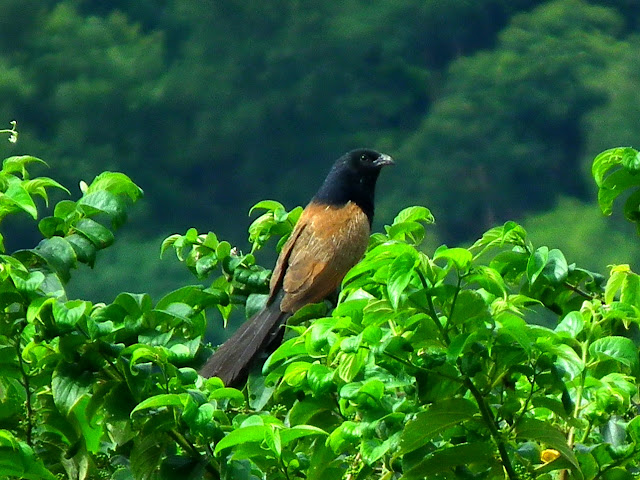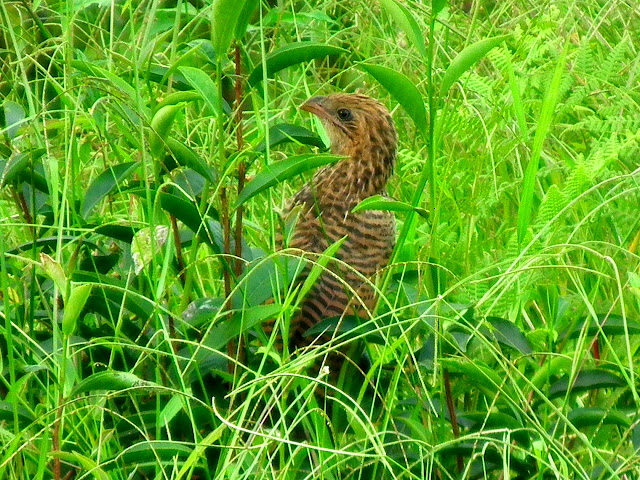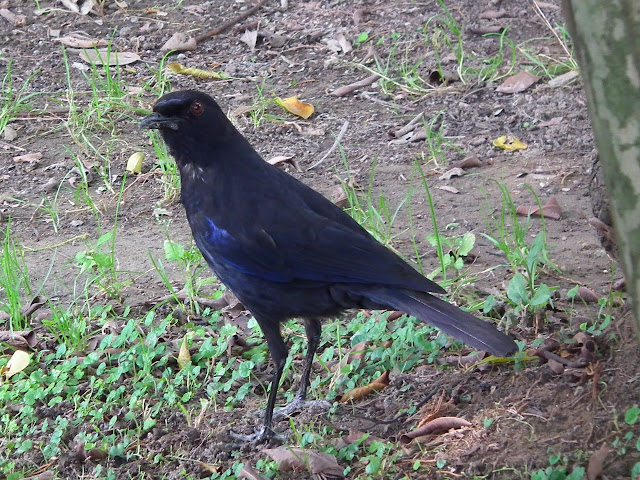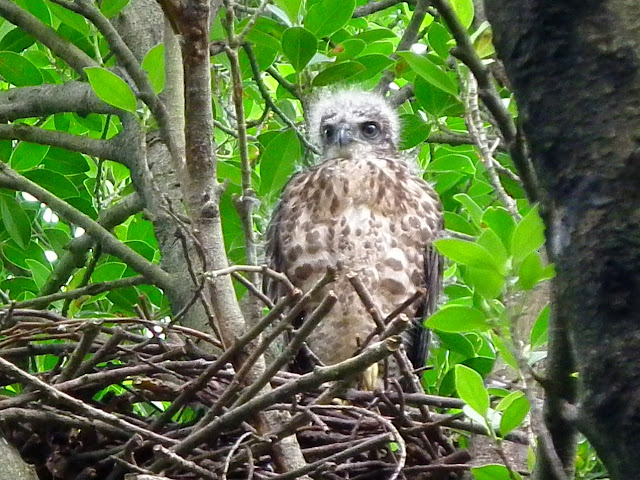They live on drone pupas, baby bees or adult bees. Taiwan Forestry Bureau has videotaped a group of Oriental Honey Buzzards working cooperatively to attack a nest of the Vespa basalis and succeeded. In the video, one or two Oriental Honey Buzzards led the attack, spent two to three days in crashing the nest again and again using their bills and paws, and successfully drove the adult bees away from their nest to eat their drone pupas and baby bees.
According to information on the internet, the plumage of Oriental Honey Buzzards is very much diversified and can be roughly divided into three types. The first type is mainly dark-brown for the whole body. The second type is mainly light-brown for the whole body, and the third type is mainly dark-brown on upper body and white from throat down mixed with dark-brown spots.
Taken on 7/5/2012 at Maokong area of Taipei City.

Taken on 7/5/2012 at Maokong area of Taipei City.

Video recorded on 7/5/2012 at Maokong area of Taipei City.
| Chinese name: | 東方蜂鷹 |
| English name: | Oriental Honey Buzzard, Crested Honey Buzzard |
| Nickname: | |
| Scientific name: | Pernis ptilorhyncus |
| Order: | Falconiformes |
| Family: | Accipitridae |
| Species status: | Species |
| Conservation status: | IUCN listed it as Least Concern. Taiwan listed it as "Class II Rare and Valuable Species". |
| Migration status: | Mostly passage migrants in Autumn and Spring, with some migratory birds in Winter and some Taiwan local birds |
| Frequency of appearance: | Uncommon in Taiwan |
| Foods: | Drone Pupas, Baby bees, Adult bees, Tiny animals |
| Habitat: | Woods, broadleaf forests |
| Altitude: | Low to mid-altitudes |
| Behavior: | Often appear alone or in flocks in broadleaf forests. |
| Characteristics: |
General Characteristics: About 57~67 cm long and 70~80 cm tall. Bill is black and the base of the bill is blueish grey. Paws are yellow. There are many kinds of plumages for the original species. It's kind of hard to find two species which bear the same plumage. In summary, there are mainly two types of plumages. One type is light-colored, and the other type is dark-colored. The light-colored plumage is mouse gray on the head and the face, and is white from throat down, with some vertical dark-brown stripes. The dark-colored plumage is dark-brown on the head and light-brown on the cheek and the throat, and is light-brown from breast down, with some vertical dark-brown stripes. The iris is dark-brown for males. For females, the iris is bright yellow. Summer plumage: Winter plumage: Similar species: |
| Breeding places: | High latitude areas of the asian continent, such as Kazakhstan, Tajikistan, Iran, southern Siberia, outer Mongolia, Heilungkiang Province of China, Jilin Province of China, Korean peninsula, Japan, etc. |
| Migration destinations: | Wintering in Indian sub-continent, Southeast Asia, South Pacific Islands, etc. |
| Time photographed: | 7/5/2012 |
| Location found: | Maokong area, Taipei City |
| Sources: | Internet |
| Notes: |















































